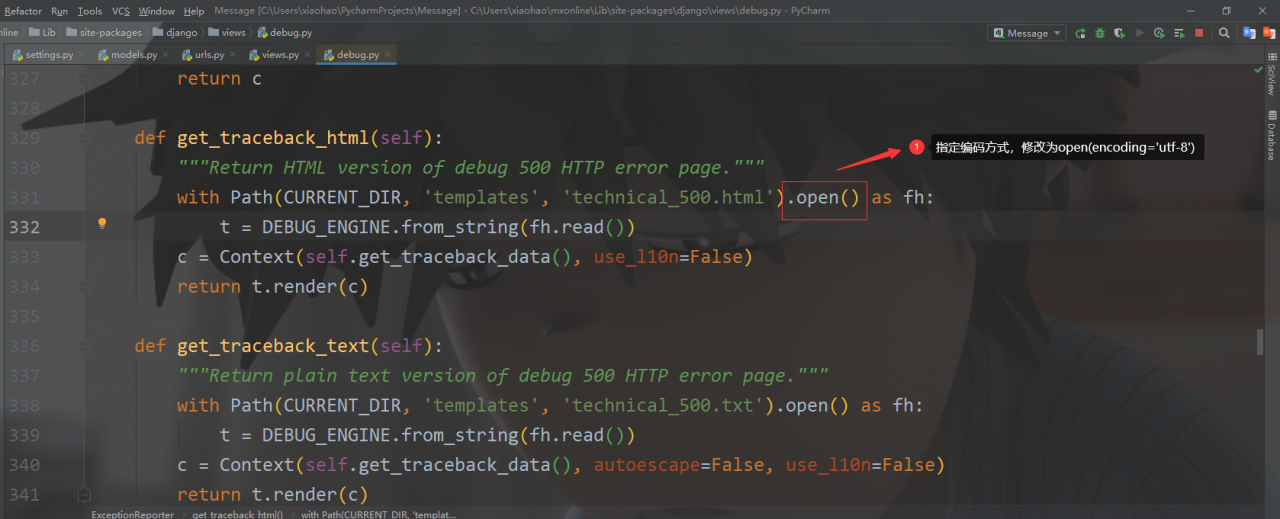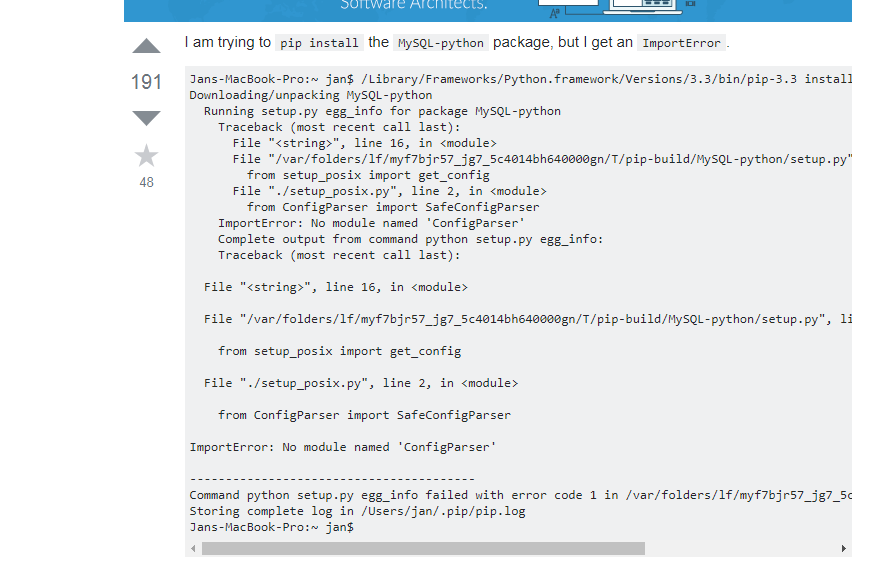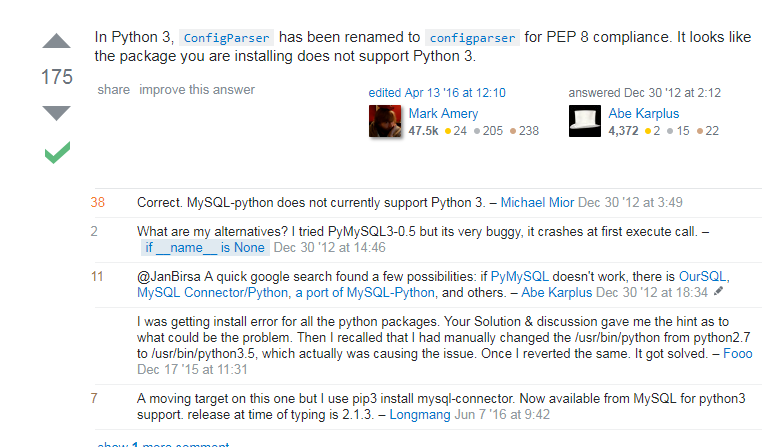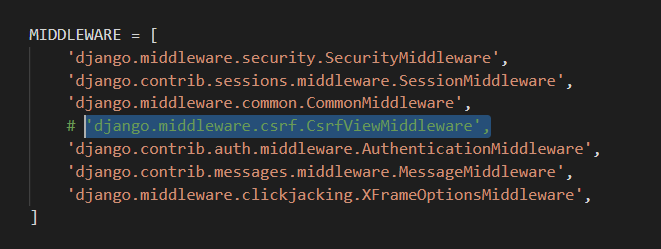After changing the data configuration in the setting file of the project:
DATABASES = {
'default': {
'ENGINE': 'django.db.backends.mysql',
'NAME': 'cesi_DB', #Your database name
'USER': 'sheng', # your database username
'PASSWORD': 'xxoo', # your database password
'HOST': '10.0.0.11', # your database host, leave blank to default to localhost
'PORT': '3306', # your database port
}
}
Error Message:

'Did you install mysqlclient or MySQL-python?' % e django.core.exceptions.ImproperlyConfigured: Error loading MySQLdb module: No module named 'MySQLdb'. Did you install mysqlclient or MySQL-python?
Solution:
The engine that needs to change the database:
MYsqlDB ==》pymysql
In application (app01)__init__Add to the document:
import pymysql pymysql.install_as_MySQLdb()








